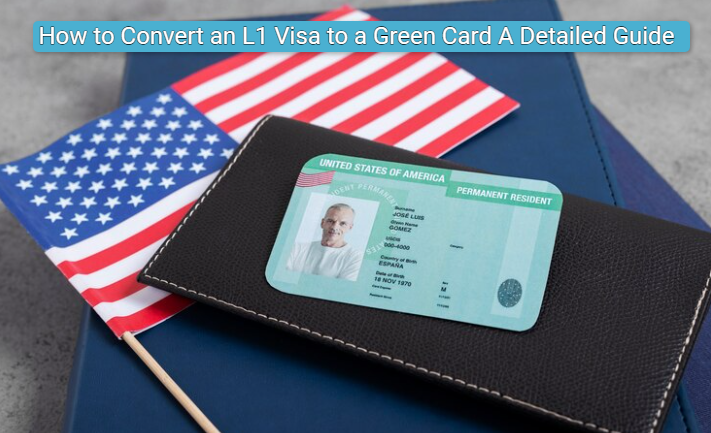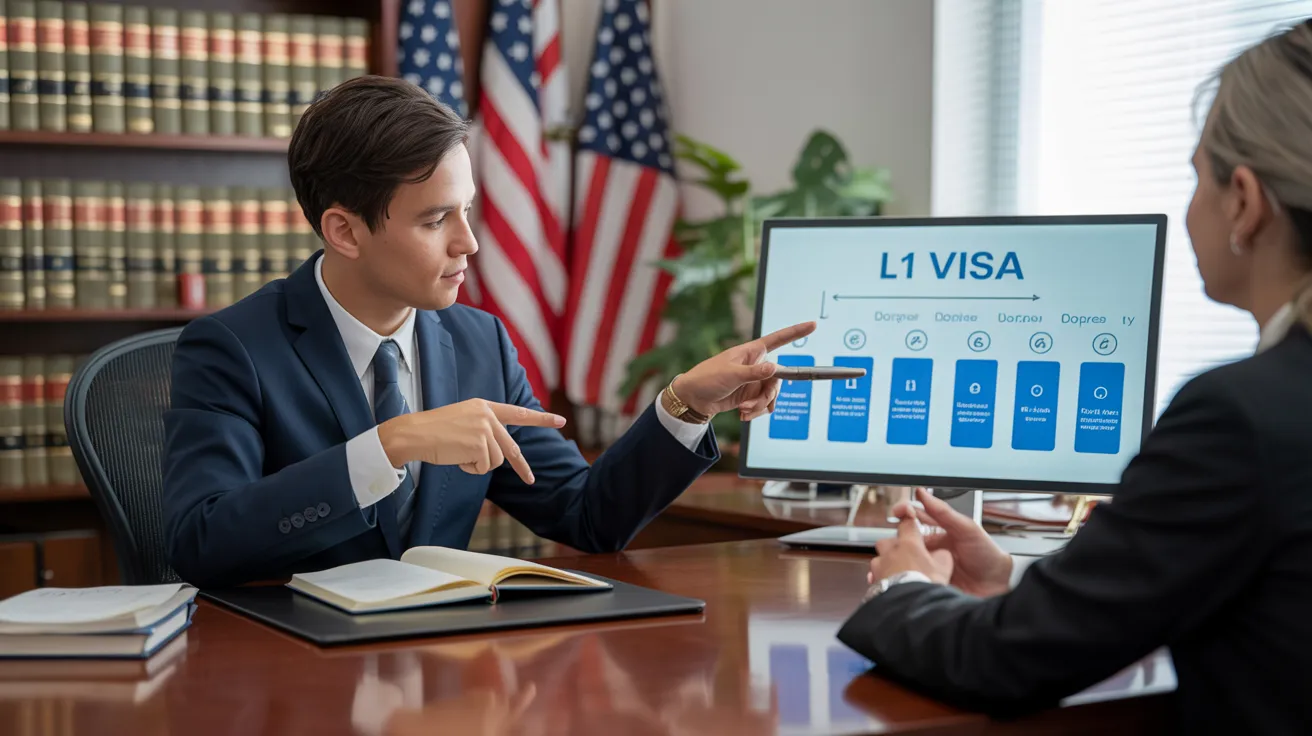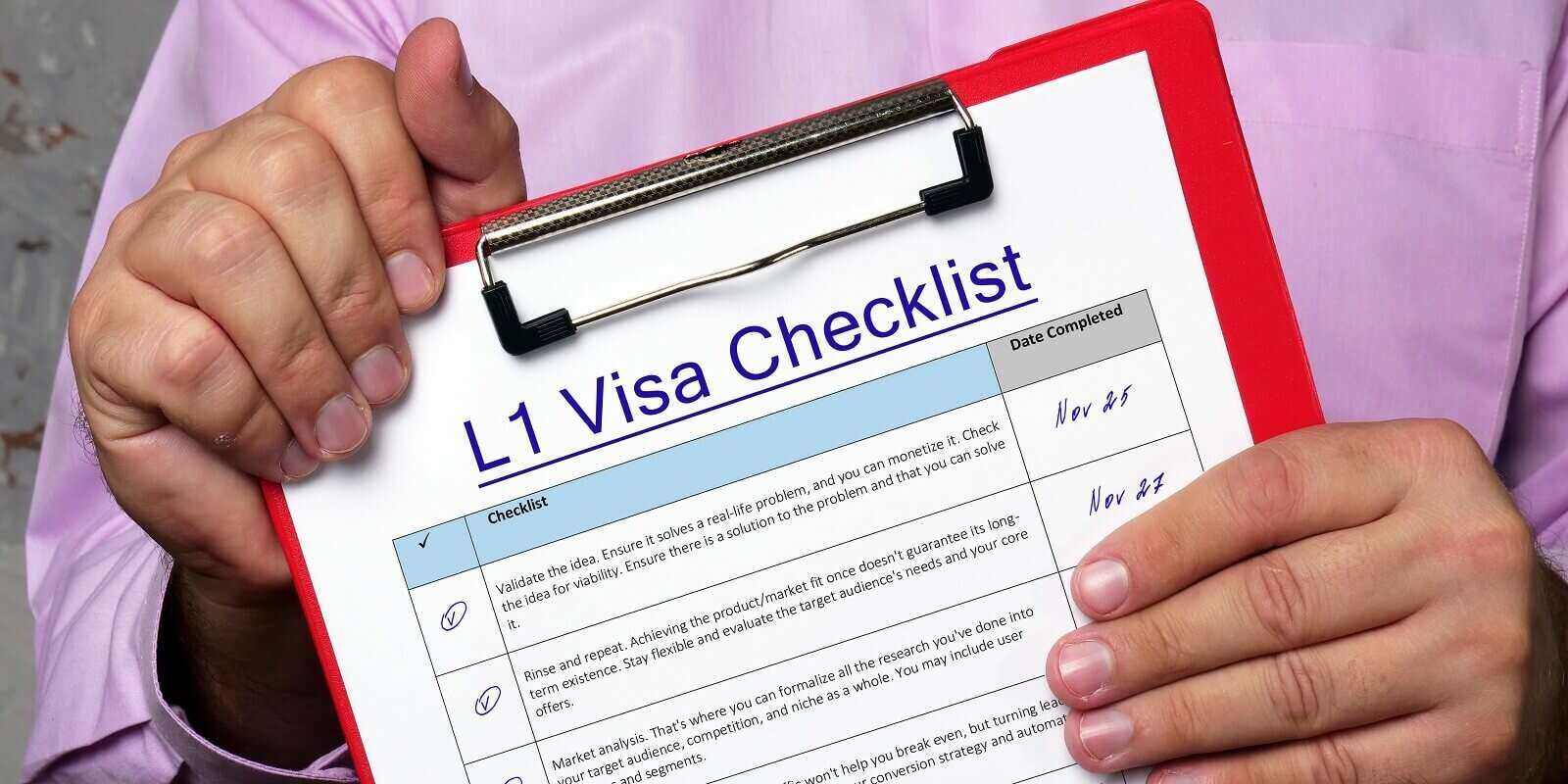Unlocking Opportunities: A Comprehensive Overview to the L1 Visa Process
The L1 visa process presents a critical pathway for international firms looking for to move vital staff members throughout boundaries. Understanding the nuances of qualification standards, the distinctions in between L-1A and L-1B visas, and the intricacies of the application procedure can greatly influence a candidate's success. Navigating this complex landscape is not without its challenges, and careful attention to documents and employer sponsorship is important. As we discover the crucial elements of this process, the approaches for getting rid of prospective obstacles will come to be evident, revealing just how educated prep work can open up a world of possibilities.
Recognizing the L1 Visa
Understanding the L1 visa involves recognizing its significance as an important device for international firms seeking to move skilled staff members in between international workplaces. This non-immigrant visa category promotes the activity of executives, supervisors, and specialized knowledge workers to the United States, thus enabling companies to keep operational continuity and harness international skill efficiently. The L1 visa is separated into two primary categories: L-1A for managers and executives, and L-1B for staff members possessing specialized knowledge.The L1 visa serves a critical function in boosting a company's competitive edge in the international marketplace - L1 Visa. By enabling firms to relocate their crucial personnel, companies can guarantee that crucial tasks are taken care of by certified individuals that are already acquainted with the company's society and operational processes. This interior transfer device not just cultivates expertise sharing yet also promotes technology and cooperation across borders.Moreover, the L1 visa is usually favored for its relatively uncomplicated application process compared to other visa classifications, as it permits double intent, allowing holders to go after permanent residency while on a short-lived copyright. This feature makes the L1 visa especially appealing for both employers and employees, as it simplifies the pathway for proficient professionals to establish long-lasting residency in the United States
Eligibility Requirements
Qualification for the L1 visa hinges on a number of crucial standards that assure both the staff member and the company fulfill specific qualifications. This non-immigrant visa is designed for multinational companies to move employees from consular services to united state counterparts.Firstly, the employer needs to be a qualifying organization, that includes a parent firm, branch, associate, or subsidiary of a united state service. The business needs to have been doing service for at the very least one year both in the U.S. and abroad. This guarantees that the firm has enough functional stability and a legit presence.Secondly, the worker needs to hold a managerial, executive, or specialized expertise setting. For L1A visas, the candidate needs to show supervisory or executive certifications, while L1B visas focus on specialized knowledge related to the organization's products, solutions, or processes. Furthermore, the worker should have functioned for the international entity for a minimum of one continuous year within the last 3 years prior to their application.Lastly, the staff member's function in the united state need to straighten with their previous position, ensuring that their abilities and know-how are leveraged for the business's benefit.
Sorts Of L1 Visas
The L1 visa group comprises two primary types made to assist in the transfer of employees within international business: the L1A visa for supervisors and execs, and the L1B visa for workers with specialized understanding. Each kind serves distinct purposes and has certain eligibility criteria.The L1A visa is tailored for individuals that hold managerial or executive placements within a business. This visa makes it possible for high-level workers to move to an U.S. branch, subsidiary, or associate of the very same organization. Applicants for the L1A visa must demonstrate that they have actually been used in a managerial or executive ability for at the very least one continuous year within the past 3 years prior to their application. Furthermore, this visa uses a much longer duration of keep, initially approved for 3 years, with the opportunity of extensions for approximately 7 years.In contrast, the L1B visa is planned for professionals with specialized understanding pertaining to the business's items, solutions, or processes. To qualify, candidates should verify that their competence is critical to the company and that they have helped a minimum of one continual year within the last three years in a role that required this specialized expertise. The L1B visa is at first provided for 3 years, with expansions readily available for up to 5 years.Both visa types are important for firms looking for to improve their worldwide operations by leveraging skilled personnel, thereby promoting technology and effectiveness within the U.S. market.
Application Process
Guiding via the L1 copyright procedure includes a number of essential actions that must be meticulously complied with to ensure a successful end result. The procedure begins with the U.S. employer, that have to initially develop qualification by showing a certifying partnership with the foreign entity and confirming that the employee meets the details needs for the L1 visa group being sought.Once qualification is verified, the company starts the process by filing Type I-129, the Petition for a Nonimmigrant Employee, with the U.S. Citizenship and Migration Services (USCIS) This form should be gone along with by a thorough summary of the task responsibilities to be performed, the organizational structure of both the U.S. and international entities, and the employee's certifications. It's vital to validate that all info is accurate and complete, as omissions or errors can cause hold-ups or denials.Upon authorization of the I-129 request, the following action entails the employee looking for the L1 visa at an U.S. embassy or consulate in their home nation. This phase needs the conclusion of Kind DS-160, the Online Nonimmigrant copyright, and arranging a meeting. During the meeting, the candidate should offer evidence supporting their certifications and the employer's petition.After the visa is approved, the employee can enter the USA to operate in the marked role. Overall, mindful preparation and adherence to every action of the application process are necessary for a successful L1 visa result.
Called for Documentation

Essential Kinds Required
Navigating the L1 Visa process needs careful interest to the important forms and documentation essential for a successful application. The key kind needed is the Kind I-129, Application for a Nonimmigrant Worker, which need to be finished and submitted by the U.S. company. This type outlines the details of the employment offer and the qualifications of the staff member looking for the L1 Visa.Alongside Form I-129, the applicant will need to total Type I-539 if going along with member of the family are additionally obtaining visas. In addition, the employer should offer proof of the certifying partnership between the united state entity and the foreign entity, typically requiring the entry of corporate records such as posts of incorporation or financial statements.Moreover, it is necessary to include the L Classification Supplement to Kind I-129, which specifies the sort of L Visa being asked for-- either L-1A for managers and execs or L-1B for staff members with specialized understanding. Applicants need to assure that all kinds are signed and dated suitably, as incomplete submissions can lead to hold-ups or denials. Effectively putting together these essential forms lays the foundation for a smoother L1 copyright procedure.

Supporting Proof Needs
Sustaining documents is crucial for an effective L1 copyright, as it corroborates the cases made in the application. Applicants have to provide an array of documents to show eligibility for the visa, which is classified into two primary kinds: proof of the qualifying connection in between the united state and international entities and proof of the candidate's qualifications.To establish the connection, applicants ought to submit documentation such as company organizational graphes, monetary statements, and evidence of possession. These papers verify that the international business has a certifying partnership with the U.S. company, whether as a parent firm, subsidiary, branch, or affiliate.For the candidate's credentials, crucial records include a thorough employment letter from the foreign employer, outlining the candidate's task title, duties, and period of employment. In addition, academic credentials, such as levels and diplomas, ought to be given to verify the candidate's experience in the pertinent field.
Company Sponsorship Files

Typical Obstacles
Maneuvering the L1 visa process presents several common obstacles that candidates must know. Trick issues typically include rigid documentation needs, prospective delays in processing times, and the need for rigorous lawful compliance. Recognizing these challenges can assist applicants much better prepare and minimize risks throughout their copyright trip.
Documents Demands
The L1 copyright procedure often provides considerable challenges connected to documents demands. Candidates should offer extensive documentation to establish eligibility, which can bring about confusion and possible hold-ups. Trick records include proof of a qualifying connection in between the united state and international employer, evidence of the applicant's work background, and comprehensive details about the task function in the U.S.One usual difficulty is collecting adequate proof to show the nature of the qualifying relationship. Companies typically battle to existing clear business charts or financial declarations that illustrate the connection between the entities. Additionally, making sure that letters of support from employers properly mirror the candidate's work obligations and credentials is essential, as vague descriptions can result in denials.Another problem emerges from the need for detailed job descriptions that straighten with the L1 visa classifications. Applicants should articulate not just their existing duty yet also their supervisory or specific knowledge responsibilities plainly. This demands a thorough understanding of both the candidate's setting and the regulatory language made use of in L1 applications.
Processing Time Delays
Experiencing hold-ups in processing times find out more is a typical obstacle dealt with by L1 visa applicants, frequently causing aggravation and uncertainty. Numerous aspects add to these hold-ups, consisting of high application volumes, increased analysis of applications, and management backlogs within the united state Citizenship and Immigration Provider (USCIS) Applicants might find that processing times can vary substantially depending upon the service facility handling their application, as each facility has its own work and efficiency degrees. Furthermore, the complexity of the candidate's case, such as the requirement for comprehensive paperwork or clarification, can additionally extend wait times.In some circumstances, problems connected to the candidate's present migration condition or previous visa background might also bring about extra hold-ups, as USCIS may call for additional testimonial or details. It is vital for prospects to stay aggressive throughout this period, preserving open interaction with their employers and legal agents to resolve any kind of potential concerns promptly.Understanding these handling time challenges can assist L1 visa applicants get ready for possible delays and mitigate the effect on their shift and job plans. Persistence and persistance are important merits in maneuvering this complex procedure.
Lawful Compliance Issues
Lots of L1 visa applicants come across legal compliance issues that can complicate their journey toward obtaining the visa. Recognizing and sticking to the details regulations established by the U.S. Citizenship and Immigration Services (USCIS) is vital. Common challenges include showing the qualifying relationship between the international and united state companies, in addition to verifying that the applicant possesses the requisite specialized knowledge or supervisory capacity.Additionally, candidates should give detailed paperwork outlining their task tasks, company framework, and financial practicality of the U.S. entity. Inadequate or imprecise documents can cause delays or even rejections. Employers need to likewise ensure that they adhere to labor legislations, including wage and functioning problem criteria, which can influence visa eligibility.Another usual problem involves keeping compliance with the terms of the visa once granted. Adjustments in employment standing, work obligations, or business structure can demand changes to the visa, which otherwise dealt with quickly can cause lawful difficulties. Because of this, remaining informed regarding compliance demands and seeking legal advice when necessary is important to navigate the complexities of the L1 visa procedure effectively.
Tips for Success
Success in the L1 copyright procedure usually rests on careful preparation and attention to detail. To improve your chances of authorization, begin by thoroughly understanding the eligibility demands for both the L1A and L1B visa classifications. Review whether your position at the company certifies as managerial, executive, or specialized understanding, as this classification especially affects your application.Next, collect comprehensive documentation that validates your insurance claims. This consists of organizational charts, thorough job summaries, and proof of the business's functional structure. Clear and succinct evidence of the qualifying partnership between the U.S. entity and the international entity is essential. Verify that all records are organized realistically and offered in a professional fashion, as this shows your dedication and severity regarding the application.Engage the services of a seasoned migration lawyer who specializes in L1 visas. Their expertise can show very useful, guiding you through complex policies and guaranteeing that all documents adheres to existing regulations. In addition, prepare for the meeting by exercising solutions to typical concerns and being prepared to discuss your role and payments to the company detailed.
Often Asked Concerns
Can Family Members Members Go Along With the L1 Visa Owner?
Yes, member of the family of L1 visa owners, consisting of spouses and unmarried children under 21, can come with the main visa holder. They might also look for L2 visas, which permit them to live in the United States.
How Much Time Can I Remain On an L1 Visa?
The L1 visa enables preliminary remains of approximately 3 years, with the opportunity of expansion. L1A visa owners may stay for an optimum of seven years, while L1B visa holders can continue to be for 5 years.
Can L1 Visa Holders Get a Permit?
Yes, L1 visa owners can obtain an eco-friendly card. L1 Visa. They might seek long-term residency through employment-based groups, typically calling for sponsorship from their employer, offered they meet the necessary qualifications and documentation demands
What Takes place if My L1 copyright Is Denied?
If your L1 copyright is denied, you might obtain a notification outlining the reasons for rejection. You can look for to appeal the decision, reapply, or explore different visa options based on your situations.
Exist Any Traveling Restrictions With an L1 Visa?
An L1 visa generally enables for international traveling; nonetheless, re-entry to the U. L1 Visa Requirements.S. is contingent upon keeping valid status. Vacationers should ensure conformity with visa problems to prevent complications upon return
Verdict

Comments on “L1 Visa Lawyer Help”